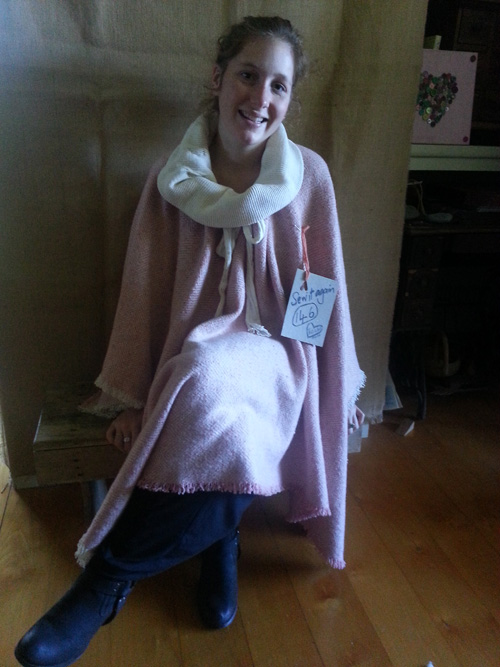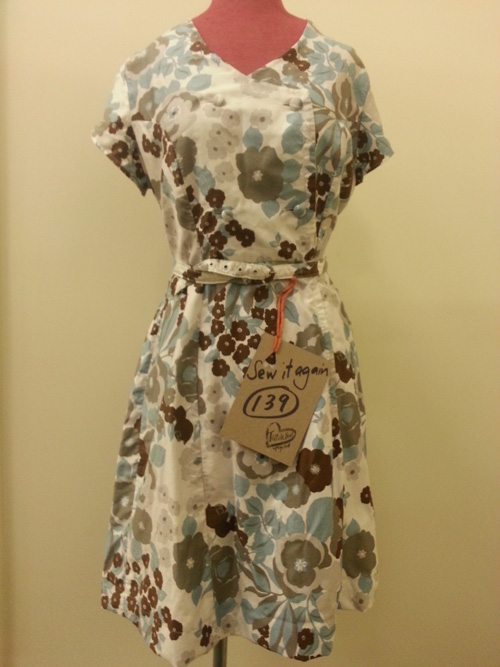 By upcycling every day during 2014 for the Sew it Again project, I’m following my heart on a creative journey that bridges memories from childhood, professional expertise, networks, and a love of natural, sustainable fashion.
By upcycling every day during 2014 for the Sew it Again project, I’m following my heart on a creative journey that bridges memories from childhood, professional expertise, networks, and a love of natural, sustainable fashion.
As well as upcycling for its own sake, I’m sharing skills and creative ideas with others interested in refashioning clothing they are not wearing and working to shift society’s thinking about the ecological impact of current clothing habits.
Today we had a second workshop as part of my Upcycled exhibition at Coolah’s Pandora Gallery which was a lot of fun, with Carol, Stella, Chris, Natalie, Georgina and Diane all leaving the session inspired by what is possible when you apply a little creative thinking.

And star pupil from Sunday’s workshop Jacki went home and produced this jeans skirt (see below) as a result of seeing what can be done. No doubt Jacki is on the way to upcycling her wardrobe forever more, using her existing sewing skills laced with creative inspiration.

To create Sew 134, we chopped off the sleeves from a wool cardigan, mended the holes then covered them with beads from a reject necklace. We then knotted the ends to form a pompom of sorts for what are now beanies. The buttoned front of the cardigan became a carry bag, with the shoulders and back of the cardi being trimmed and sewn into a long strap. A bit hard to show in photos, but once you start cutting you can devise your own method. Have fun.

 Endless consumption can’t rule. To sustain our lifestyle into the future we need to be mindful about the resources we consume and the waste we create in doing so.
Endless consumption can’t rule. To sustain our lifestyle into the future we need to be mindful about the resources we consume and the waste we create in doing so.












